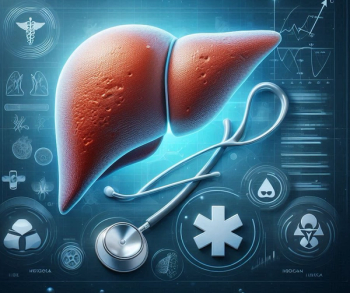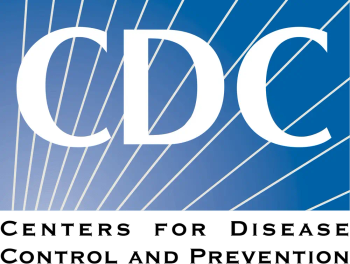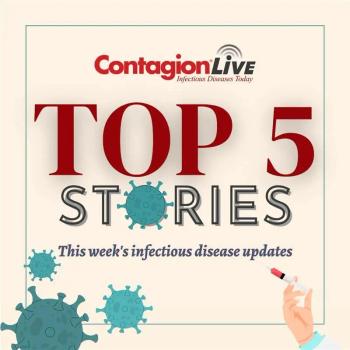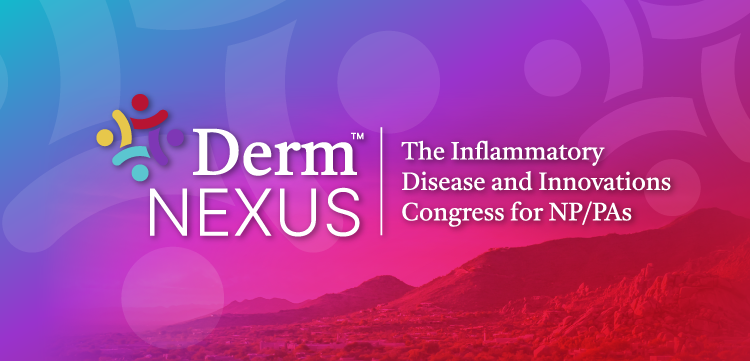
- Contagion, Spring 2025 Digital Edition
- Volume 10
- Issue 1
When Should We De-Escalate Empiric Antimicrobials?
De-escalating empiric antimicrobial therapy is a strategy to combat antimicrobial resistance. Antimicrobial stewardship programs can play a major role in preserving antibiotic effectiveness and preventing unnecessary antibiotic use.
Antimicrobial resistance (AMR) is a threat to global public health, with projections suggesting over 30 million deaths could be attributable to AMR by 2050.1 Antimicrobial stewardship programs (ASPs) are critical to preserving antibiotic efficacy while ensuring optimal patient outcomes. As stewards, many of us evaluate opportunities for de-escalation as a daily clinical intervention to optimize antibiotic therapy. De-escalation is often considered the narrowing of the spectrum of activity of antibiotic regimens by changing or stopping a component of the regimen. While the benefit of de-escalation is thought to reduce the emergence of multidrug resistance and collateral damage from broad-spectrum antibiotic use,2 this is still largely up for debate. What is the evidence for or against de-escalation of antibiotics? Why is de-escalation a core strategy for ASPs, and what outcomes are we expecting as a result?
Defining De-Escalation
In the Action section of the Centers for Disease Control and Prevention’s Core Elements of Hospital Antibiotic Stewardship Programs, providers are recommended to ask themselves, “Can antibiotics be stopped or improved by narrowing the spectrum (also referred to as ‘de-escalation’) or changing from intravenous to oral?” when reviewing antibiotics daily.3 However, an initial question when discussing antibiotic de-escalation is how the intervention is defined for an individual ASP. There are several different definitions and interpretations, including the following:
• Discontinuation of 1 or more components of combination antibiotic therapy4
• Early discontinuation of antibiotics5
• Replacing broad-spectrum antibiotics with agents characterized by a narrower spectrum or a lower ecological impact6
• Stopping an antibiotic prescribed in combination therapy to provide dual coverage for a specific pathogen6
• Stopping an antibiotic prescribed to cover pathogens that are not isolated from microbiological cultures6
• Switching intravenous antibiotics to oral3
As mentioned in a 2023
Advantages of De-Escalation
De-escalation is considered a cornerstone of antimicrobial stewardship and has been incorporated into both national and international guidelines as a mechanism for improving antibiotic use.8-11
The 2021 Surviving Sepsis guidelines recommend that due to the “adverse societal and individual risks to continued unnecessary antimicrobial therapy, thoughtful de-escalation of antimicrobials based on adequate clinical improvement is appropriate even if cultures are negative.” De-escalation is also considered safe based on systematic reviews and meta-analyses assessing outcomes of clinical complications or adverse events.5,9 TABLE 1 summarizes the advantages of de-escalation.
Patient safety outcomes of de-escalation. Though heterogeneous, there have been studies on the patient safety outcomes of de-escalation across various infections. The 2020 DIANA study was a prospective, observational assessment of adult patients in the intensive care unit (ICU) who were receiving empiric antibiotic therapy for a bacterial infection. Of the 1495 patients enrolled from 28 countries, only 16% had their empiric antibiotics de-escalated. There was no difference in 28-day mortality between groups with de-escalation or no change in therapy (15.8% vs 19.4%; P = .27). The emergence of multidrug resistance was 7.5% in de-escalated patients vs 11.9% in patients whose therapy was unchanged (relative risk, 0.63; 95% CI, 0.39-1.01; P = .06). The authors concluded that while de-escalation was infrequently performed in this patient population, it was likely safe.12
In a retrospective assessment of antibiotic de-escalation utilizing a spectrum score in nosocomial pneumonia (n = 1812), patient outcomes were compared between those who had antibiotics de-escalated and those who did not. There was no difference in composite treatment failure (35.0% vs 33.8%; P = .604). However, patients who had de-escalation of their antibiotics had fewer antibiotic days (median, 9 vs 11; P < .0001), episodes of Clostridioides difficile infection (2.2% vs 3.8%; P = .046), and days of hospitalization (median, 20 vs 22 days; P = .006). Though this evaluation was singlecenter and retrospective, it demonstrated improved patient-centered outcomes of de-escalation.13 To address the lack of evidence supporting the efficacy and safety of de-escalation, the phase 3 SIMPLIFY trial (NCT02795949) was the first randomized trial to evaluate the efficacy of de-escalation in a specific clinical situation. The objective of this open-label, multicenter, randomized trial in 21 Spanish hospitals was to determine whether de-escalation from an antipseudomonal β-lactam to an oral β-lactam, TMP/SMX, or ertapenem was noninferior to continuing the antipseudomonal β-lactam in patients with Enterobacterales bloodstream infections. Patients were randomly assigned to de-escalate to antibiotics without activity against Pseudomonas aeruginosa in a structured and specific order based on susceptibility (from ampicillin to ertapenem) or continue the antipseudomonal β-lactam. Clinical cure was achieved by 90% of the de-escalation group and 89% of the control group (n = 331 of the modified intention-to-treat population). There were no treatment-related deaths.
The authors determined that de-escalation was noninferior to continuing the empiric antipseudomonal therapy in this setting of Enterobacterales bacteremia.14 Though the SIMPLIFY results are encouraging and support the safety of de-escalation, there are limitations. Of 2030 patients assessed for eligibility, 1265 (62%) had exclusion criteria, potentially limiting the generalizability of the results. Patients could also be “de-escalated” to ciprofloxacin or ertapenem, which could be considered escalation if evaluating the impact of collateral damage by the antibiotic.
Despite these limitations, SIMPLIFY is the first randomized trial to demonstrate the safety of de-escalation. The epidemiology and outcomes of antibiotic de-escalation in patients with suspected sepsis were recently studied in a retrospective analysis of adults admitted to 236 United States hospitals.15 The authors reviewed adults admitted with suspected sepsis who were initially treated with antimethicillin-resistant Staphylococcus aureus (MRSA) and antipseudomonal antibiotics, but had no resistant organisms requiring these agents, through hospital day 4. They defined de-escalation as stopping the anti-MRSA or antipseudomonal antibiotics or switching to narrower-spectrum antibiotics by day 4. Among 124,577 patients, antibiotics were de-escalated in 36,806 (29.5%), with narrowing in 27,177 (21.8%) and cessation in 9629 (7.7%).
Predictors of de-escalation included less severe disease, positive cultures with organisms outside of MRSA and P aeruginosa, and negative or absent MRSA nasal swabs. Based on a propensity score, de-escalation was associated with lower risks for acute kidney injury (OR, 0.80; 95% CI, 0.76-0.84), admission to the ICU after day 4 (OR, 0.59; 95% CI, 0.520.66), and in-hospital mortality (OR, 0.92; 95% CI, 0.86-0.996). The authors theorized that lower risk for antibiotic adverse effects and antibiotic-resistant infections may have impacted the outcome of mortality in this analysis. Limitations of this study include potential confounding and the inability to review the rationale for de-escalation due to its retrospective nature. De-escalation can also occur at transitions of care, such as hospital discharge. In a quasi-experimental study, 800 patients were evaluated for optimization of antibiotics at time of hospital discharge with pharmacist intervention. Prior to the intervention, 36% of discharge regimens were optimized compared with 81.5% after the intervention (P < .001). The authors also noted decreased isolation of multidrug-resistant pathogens (7% vs 2.5%; P = .003) and C difficile (1.8% vs 5%; P = .94). Optimizing antimicrobial therapy selection, including de-escalation, seemed to have positive effects on patient outcomes.16 It is important to note that there may be selection bias in outcomes reported on de-escalation. Stewards are more likely to recommend de-escalation in patients who are clinically improving; therefore, outcomes may be skewed.4 Factors positively and negatively associated with de-escalation can be found in TABLE 2.
Reduced selection pressure for development of resistance. While broad vs narrow spectrum has been historically ambiguous, narrow spectrum is often referred to as targeted therapy for a specific microorganism with ideally less impact on the gut microbiome.17,18 Conversely, broad-spectrum antimicrobials have activity against multiple bacterial species.18 The use of broad-spectrum antibiotics is associated with selection for resistance, which can occur in both the pathogen causing the infection and other bacteria that are exposed to the antibiotic. Selection for resistance in nonpathogenic commensal bacteria can lead to genetic alterations that persist and are subsequently transferred to pathogenic bacteria.18 As an example, an exposure as brief as a single day of imipenem may result in development of new AMR.19 In addition to the development of resistance, persistence may occur for 48 hours or more after discontinuation of antibiotics, and these lower concentrations can lead to emergence of resistance.4 Antibiotic exposure also disrupts the microbiome and can lead to increased susceptibility to C difficile or multidrug-resistant organisms.14 Short-term antibiotic exposure has been shown to result in immediate alterations to the gut microbiota for up to 2 years.20,21 Targeted antibiotic therapy may cause less disruption to the intestinal microbiota than prolonged broad-spectrum therapy.22 The use of narrow-spectrum antibiotics that do not select for cross-resistance in nontargeted bacteria and reduce collateral damage to the host microbiome may reduce the risk of multidrug-resistant organisms.18 In the 2024 SIMPLIFY trial, the authors compared rectal samples of a subset of the study population (n=110) at the onset and termination of the study. Of these, 7 in the de-escalation group (15%) and 15 in the control group (23%) acquired multidrug-resistant gram-negative bacteria (P = .28).
Multidrug-resistant organisms acquired in the de-escalation group were Enterobacterales (2 AmpC-producing and 4 ESBL-producing) and 1 Stenotrophomonas maltophilia. Patients in the control group acquired 13 Enterobacterales (6 AmpC-producing, 6 ESBL-producing, and 1 carbapenemase-producing) and 2 S maltophilia. Though not statistically significant, these results seem to support de-escalation. It is important to note that the effect of de-escalation on acquisition of multidrug-resistant organisms may be impacted by antibiotics selected, total duration of therapy, local epidemiology, and the patient’s baseline microbiome based on prior antibiotic exposure.14
Effects of reduced duration of antibiotic exposure. De-escalation may result in reducing the number of days of therapy a patient receives, shortening the duration of the antibiotic course. Antibiotic exposure is linked to resistance development; therefore, minimizing antibiotic exposure is a goal for ASPs.4 By reducing days of therapy, there may be a reduced impact on the gut microbiome and reduced incidence of adverse effects, such as nephrotoxicity. Over 45 randomized controlled trials (RCTs) have compared the efficacy of short-course and traditional, longer courses of antibiotic therapy for the treatment of common infections and have found no difference in efficacy between them.23 Of the RCTs that evaluated the effect on resistance, shorter courses decreased the emergence of AMR in respiratory secretions.23
An increase in the development of resistance has been demonstrated with days of exposure to antipseudomonal β-lactam antimicrobials. Of patients diagnosed with sepsis or septic shock (n = 7118), each additional day of exposure to any antipseudomonal β-lactam resulted in an adjusted hazard ratio (aHR) of 1.04 (95% CI, 1.041.05) for new resistance development. In addition to the 2% to 8% increase in resistance by exposure to each antipseudomonal antibiotic, new resistance was also demonstrated to other pathogens. P aeruginosa was the most common pathogen to develop new resistance in the meropenem group (65%), and Enterobacter species was the most common resistant pathogen in the piperacillin-tazobactam group (42.7%). This study supports de-escalation or discontinuation of these antibiotics to minimize exposure to the shortest effective duration.24
Measuring de-escalation. Tracking and reporting de-escalation can be a challenge. Scoring systems allow for the evaluation of the spectrum of activity of antimicrobials, such as the Antibiotic Spectrum Index or Days of Antibiotic Spectrum Coverage score that reflects the quantity and spectrum of antimicrobial therapy to evaluate for benchmarking days of therapy.25,26 Incorporating spectrum scores could provide a more sustainable approach to prospective audit and feedback by prioritizing antibiotic regimens for review.13 These scoring systems allow more standardization across evaluations of de-escalation and may improve the efficiency of prospective audit and feedback.
Disadvantages of De-Escalation
Though de-escalation is thought to limit prolonged exposure to broad-spectrum antibiotics and therefore reduce the emergence of resistance, data to support these claims are limited. A 2013 Cochrane review found insufficient evidence to recommend for or against de-escalation in adults with sepsis.27 Extending overall antibiotic exposure and combinations of antibiotic classes may detract from the advantages of de-escalation. A summary of the disadvantages of de-escalation can be found in TABLE 1.
Potential consequences of streamlining. In the above section on advantages, the use of narrow-spectrum antibiotics that reduce collateral damage to the host microbiome may reduce the risk of multidrug-resistant organisms.18 While minimizing broad-spectrum antibiotic exposure is recommended, it is unknown whether exposing a patient to multiple, consecutive antibiotics could also be detrimental to the microbiome.4,8 For example, if a patient is de-escalated from a carbapenem to a fluoroquinolone, this action may be considered narrowing, yet the patient is exposed to 2 courses of antibiotics with collateral effects.4 An additional study found that antibiotics with anaerobic activity may increase the risk of gram-negative resistant gut flora colonization by 4 times (aHR, 3.92; 95% CI, 1.12-13.7; P = .03).28 A retrospective analysis evaluating the impact of antibiotic exposure demonstrated that the number of unique antibiotic classes was associated with increased 90-day readmission with severe sepsis or septic shock. Compared with patients without antibiotic exposure, those who received 1 class of antibiotic had increased odds of developing septic shock. Patients who received therapy from 4 or more classes of antibiotics had more than twice the odds of developing severe sepsis.29 However, the overall impact of these combinations of antibiotic classes on gut flora is largely unknown.
Longer durations of therapy after de-escalation. De-escalation has been associated with prolonged antibiotic therapy compared with continuation of empiric therapy.30,31 A 2016 observational comparative study of patients in the ICU reviewed empiric β-lactam antibiotics and estimated the cumulative incidence of AMR after de-escalation or continuation of therapy. Of 478 antibiotic regimens reviewed, 121 (25%) were considered de-escalation. Mortality and cumulative incidence estimates of emergence of resistance to the initial β-lactam antibiotic did not significantly differ between patients de-escalated or continued on their initial antibiotic therapy.30 The duration of the antibiotic course in the ICU in de-escalated vs continued groups was 8 (range, 6-10) vs 5 (range, 4-7) days, respectively (P < .001). Mortality did not differ between patients in the de-escalation and continuation categories. The cumulative incidence estimates of the emergence of resistance to the initial β-lactam antibiotic on day 14 were 30.6% and 23.5% for de-escalation and continuation, respectively (P = .22). For the selection of multidrug-resistant pathogens, these values were 23.5% (de-escalation) and 18.6 % (continuation) (P = .35). Large sample sizes are likely necessary to identify a difference in AMR, which may indicate that the ecological impact is small.30
A study evaluating de-escalation vs continuation of empiric antibiotics in the treatment of severe sepsis also demonstrated increased ICU length of stay and a significantly higher number of superinfections compared with those continued on empiric therapy. In this randomized noninferiority trial (n = 116), the median duration of ICU stay was 9 days in the de-escalation group compared with 8 days in the continuation group (P = .71). A superinfection of the index pathogen occurred in 16 (27%) patients in the de-escalation group compared with 6 (11%) in the continuation group (P = .03). Duration of antibiotic therapy and days of receiving an antipseudomonal antibiotic were increased in the de-escalation group compared with the continuation group. Though de-escalation increased ICU length of stay and superinfections, there was not a difference in mortality between groups.31 Patient outcomes were worse for patients who had an intervention of de-escalation compared with those continued on therapy. Potential reasons for increased duration of therapy after de-escalation may be the perception that narrow-spectrum antibiotics are safer and can be continued for longer durations or that these antibiotics can be prescribed in absence of infection.4 However, despite being narrower in spectrum of activity, these extended durations continue to cause dysbiosis of the gut biome and contribute to the emergence of AMR.4
Resource requirements. De-escalation requires dedicated time and resources for manual review.7 Resource limitations further complicate implementation in Stewardship & Prevention facilities without dedicated stewardship staff. There is variability in the estimates for ASP pharmacist staffing in the existing literature. A 2017 study from the Department of Veterans Affairs validated a pharmacist clinical staffing calculator based on patient care and management activities. They recommend 1 pharmacy full-time equivalent (FTE) per 100 beds and 0.25 physician FTE per 100 beds.32 A cross-sectional survey of US ASPs by Doernberg and colleagues33 demonstrated a 0.5 increase in pharmacist FTE was significantly associated with a 58% increased odds of ASP effectiveness. These authors provide recommendations for minimal pharmacist support by bed size of 100 to 300 beds as 1.0 FTE; 301 to 500 beds, 1.2 FTE; 501 to 1000 beds, 2.0 FTE; more than 1000 beds, 3.0 FTE. These FTEs do not account for stewardship activities that are completed by multiple pharmacy staff, such as antibiotic dosage adjustments, and as such, these staffing recommendations may be challenging to implement. Due to the manual review required for de-escalation, stewardship resources may be significantly allocated to this intervention, while other interventions should also be part of a comprehensive ASP.34
Conclusion
Antibiotic de-escalation is a broad set of interventions that includes heterogeneous antibiotics and diverse clinical situations. While evidence largely supports its clinical safety and ecological benefits, significant knowledge gaps persist regarding optimal implementation, timing, and impact on emergence of resistance. De-escalation is often time- and resource-heavy, given the manual review process. A practical approach could incorporate de-escalation as a component of comprehensive ASPs that also include diagnostic stewardship for identification of the causative pathogen, clinical pathways to improve appropriateness for empiric antibiotic therapy and duration, prospective audit and feedback including handshake stewardship, optimization of pharmacokinetics/pharmacodynamics of antibiotics, and tracking and reporting the impact of these interventions. Future research should continue to evaluate the safety and efficacy of de-escalation in specific clinical situations such as infection source, empiric antibiotic therapy selected, severity of illness, and causative pathogens.
References
1.GBD 2021 Antimicrobial Resistance Collaborators. Global burden of bacterial antimicrobial resistance 1990-2021: a systematic analysis with forecasts to 2050. Lancet. 2024;404(10459):1199-1226. doi:10.1016/S0140-6736(24)01867-1
2.Tabah A, De Bus L, Leone M. Antibiotic de-escalation: finally, some action and not only words. Lancet Infect Dis. 2024;24(4):331-333. doi:10.1016/S1473-3099(23)00749-1
3.Core elements of hospital antibiotic stewardship programs. Centers for Disease Control and Prevention. December 5, 2024. Accessed February 20, 2025. https://www.cdc.gov/antibiotic-use/hcp/core-elements/hospital.html
4.De Waele JJ, Schouten J, Beovic B, Tabah A, Leone M. Antimicrobial de-escalation as part of antimicrobial stewardship in intensive care: no simple answers to simple questions-a viewpoint of experts. Intensive Care Med. 2020;46(2):236-244. doi:10.1007/s00134-019-05871-z
5.Tanzarella ES, Cutuli SL, Lombardi G, et al. Antimicrobial de-escalation in critically ill patients. Antibiotics. 2024;13(4):375. doi:10.3390/antibiotics13040375
6.Tabah A, Bassetti M, Kollef MH, et al. Antimicrobial de-escalation in critically ill patients: a position statement from a task force of the European Society of Intensive Care Medicine (ESICM) and European Society of Clinical Microbiology and Infectious Diseases (ESCMID) Critically Ill Patients Study Group (ESGCIP). Intensive Care Med. 2020;46(2):245-265. doi:10.1007/s00134-019-05866-w
7.Walker A, Prinzi A. Antibiotic de-escalation: is this the right outcome measure? Contagion. November 16, 2023. Accessed February 18, 2025. https://www.contagionlive.com/view/antibiotic-de-escalation-is-this-the-right-outcome-measure-
8.Reese M, Bookstaver PB, Kohn J, et al. Missed opportunities for early de-escalation of antipseudomonal beta-lactam antimicrobial therapy in Enterobacterales bloodstream infection. Antibiotics (Basel). 2024;13(11):1031. doi:10.3390/antibiotics13111031
9.Umpleby H, Dushianthan A, Catton T, Saeed K. Antimicrobial stewardship programmes focused on de-escalation: a narrative review of efficacy and risks. J Emerg Crit Care Med. 2022;6:23. doi:10.21037/jeccm-22-6
10.Barlam TF, Cosgrove SE, Abbo LM, et al. Implementing an antibiotic stewardship program: guidelines by the Infectious Diseases Society of America and the Society for Healthcare Epidemiology of America. Clin Infect Dis. 2016;62(10):e51-e77. doi:10.1093/cid/ciw118
11. Evans L, Rhodes A, Alhazzani W, et al. Surviving Sepsis Campaign: international guidelines for management of sepsis and septic shock 2021. Crit Care Med. 2021;49(11):e1063-e1143. doi:10.1097/CCM.0000000000005337
12. De Bus L, Depuydt P, Steen J, et al; DIANA study group. Antimicrobial de-escalation in the critically ill patient and assessment of clinical cure: the DIANA study. Intensive Care Med. 2020;46(7):1404-1417. doi:10.1007/s00134-020-06111-5
13. Ilges D, Tande AJ, Stevens RW. A broad spectrum of possibilities: spectrum scores as a unifying metric of antibiotic utilization. Clin Infect Dis. 2023;77(2):167-173. doi:10.1093/cid/ciad189
14.López-Cortés LE, Delgado-Valverde M, Moreno-Mellado E, et al; SIMPLIFY study group. Efficacy and safety of a structured de-escalation from antipseudomonal β-lactams in bloodstream infections due to Enterobacterales (SIMPLIFY): an open-label, multicentre, randomised trial. Lancet Infect Dis. 2024;24(4):375-385. doi:10.1016/S1473-3099(23)00686-2
15.Kam KQ, Chen T, Kadri SS, et al. Epidemiology and outcomes of antibiotic de-escalation in patients with suspected sepsis in US hospitals. Clin Infect Dis. 2025;80(1):108-117. doi:10.1093/cid/ciae591
16.Mercuro NJ, Medler CJ, Kenney RM, et al. Pharmacist-driven transitions of care practice model for prescribing oral antimicrobials at hospital discharge. JAMA Netw Open. 2022;5(5):e2211331. doi:10.1001/jamanetworkopen.2022.11331
17. Acar J. Broad- and narrow-spectrum antibiotics: an unhelpful categorization. Clin Microbiol Infect. 1997;3(4):395-396. doi:10.1111/j.1469-0691.1997.tb00274.x
18.Melander RJ, Zurawski DV, Melander C. Narrow-spectrum antibacterial agents. Medchemcomm. 2018;9(1):12-21. doi:10.1039/C7MD00528H
19. Armand-Lefèvre L, Angebault C, Barbier F, et al. Emergence of imipenem-resistant gram-negative bacilli in intestinal flora of intensive care patients. Antimicrob Agents Chemother. 2013;57(3):1488-1495. doi:10.1128/AAC.01823-12
20.Sehgal K, Khanna S. Gut microbiome and Clostridioides difficile infection: a closer look at the microscopic interface. Therap Adv Gastroenterol. 2021;14:1756284821994736. doi:10.1177/1756284821994736
21.Jernberg C, Löfmark S, Edlund C, Jansson JK. Long-term ecological impacts of antibiotic administration on the human intestinal microbiota. ISME J. 2007;1(1):56-66. doi:10.1038/ismej.2007.3
22. Jernberg C, Löfmark S, Edlund C, Jansson JK. Long-term impacts of antibiotic exposure on the human intestinal microbiota. Microbiology (Reading). 2010;156(pt 11):3216-3223. doi:10.1099/mic.0.040618-0
23.Spellberg B, Rice LB. Duration of antibiotic therapy: shorter is better. Ann Intern Med. 2019;171(3):210-211. doi:10.7326/M19-1509
24.Teshome BF, Vouri SM, Hampton N, Kollef MH, Micek ST. Duration of exposure to antipseudomonal β-lactam antibiotics in the critically ill and development of new resistance. Pharmacotherapy. 2019;39(3):261-270. doi:10.1002/phar.2201
25. Gerber JS, Hersh AL, Kronman MP, Newland JG, Ross RK, Metjian TA. Development and application of an antibiotic spectrum index for benchmarking antibiotic selection patterns across hospitals. Infect Control Hosp Epidemiol. 2017;38(8):993-997. doi:10.1017/ice.2017.94
26. Kakiuchi S, Livorsi DJ, Perencevich EN, et al. Days of antibiotic spectrum coverage: a novel metric for inpatient antibiotic consumption. Clin Infect Dis. 2022;75(4):567-576. doi:10.1093/cid/ciab1034
27.Silva BN, Andriolo RB, Atallah AN, Salomão R. De-escalation of antimicrobial treatment for adults with sepsis, severe sepsis or septic shock. Cochrane Database Syst Rev. 2013;2013(3):CD007934. doi:10.1002/14651858.CD007934.pub3
28. Boutrot M, Azougagh K, Guinard J, Boulain T, Barbier F. Antibiotics with activity against intestinal anaerobes and the hazard of acquired colonization with ceftriaxone-resistant Gram-negative pathogens in ICU patients: a propensity score-based analysis. J Antimicrob Chemother. 2019;74(10):3095-3103. doi:10.1093/jac/dkz279
29.Baggs J, Jernigan JA, Halpin AL, Epstein L, Hatfield KM, McDonald LC. Risk of subsequent sepsis within 90 days after a hospital stay by type of antibiotic exposure. Clin Infect Dis. 2018;66(7):1004-1012. doi:10.1093/cid/cix947
30.De Bus L, Denys W, Catteeuw J, et al. Impact of de-escalation of beta-lactam antibiotics on the emergence of antibiotic resistance in ICU patients: a retrospective observational study. Intensive Care Med. 2016;42(6):1029-1039. doi:10.1007/s00134-016-4301-z
31.Leone M, Bechis C, Baumstarck K, et al; AZUREA Network Investigators. De-escalation versus continuation of empirical antimicrobial treatment in severe sepsis: a multicenter non-blinded randomized noninferiority trial. Intensive Care Med. 2014;40(10):1399-1408. doi:10.1007/s00134-014-3411-8
32.Echevarria K, Groppi J, Kelly AA, Morreale AP, Neuhauser MM, Roselle GA. Development and application of an objective staffing calculator for antimicrobial stewardship programs in the Veterans Health Administration. Am J Health Syst Pharm. 2017;74(21):1785-1790. doi:10.2146/ajhp160825
33.Doernberg SB, Abbo LM, Burdette SD, et al. Essential resources and strategies for antibiotic stewardship programs in the acute care setting. Clin Infect Dis. 2018;67(8):1168-1174. doi:10.1093/cid/ciy255
34.Nelson GE, Narayanan N, Onguti S, Stanley K, Newland JG, Doernberg SB. Principles and practice of antimicrobial stewardship program resource allocation. Infect Dis Clin North Am. 2023;37(4):683-714. doi:10.1016/j.idc.2023.07.002
35.Tabah A, Cotta MO, Garnacho-Montero J, et al. A systematic review of the definitions, determinants, and clinical outcomes of antimicrobial de-escalation in the intensive care unit. Clin Infect Dis. 2016;62(8):1009-1017. doi:10.1093/cid/civ1199
36. Gonzalez L, Cravoisy A, Barraud D, et al. Factors influencing the implementation of antibiotic de-escalation and impact of this strategy in critically ill patients. Crit Care. 2013;17(4):R140. doi:10.1186/cc12819
Articles in this issue
8 months ago
Shifting Sands in Cellulitis8 months ago
H5N1: The Outbreak the US Got Bored With9 months ago
Contagion Spring 2025 Digital EditionNewsletter
Stay ahead of emerging infectious disease threats with expert insights and breaking research. Subscribe now to get updates delivered straight to your inbox.
















































































































































































































































































